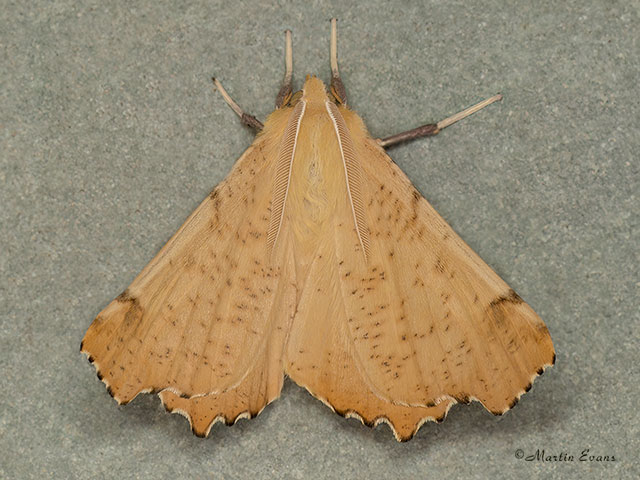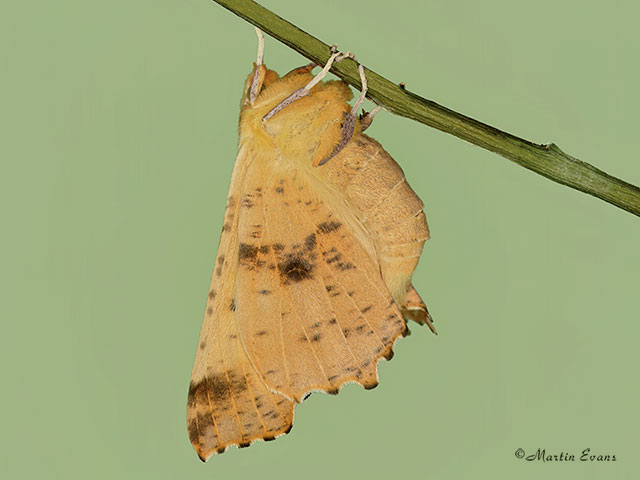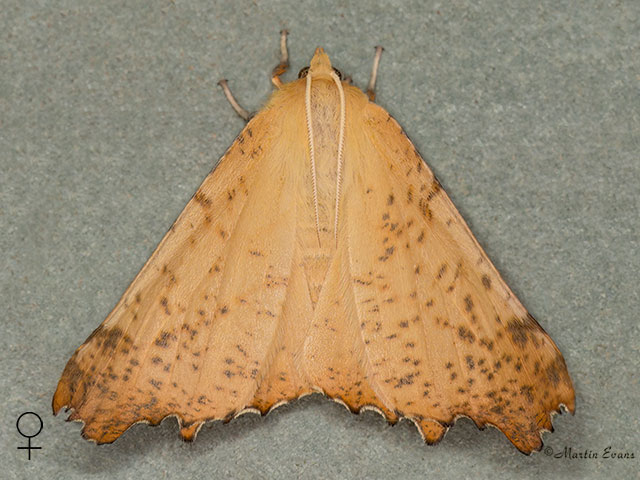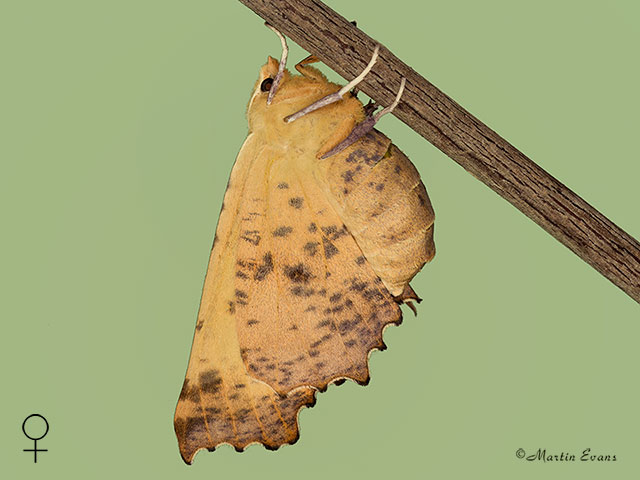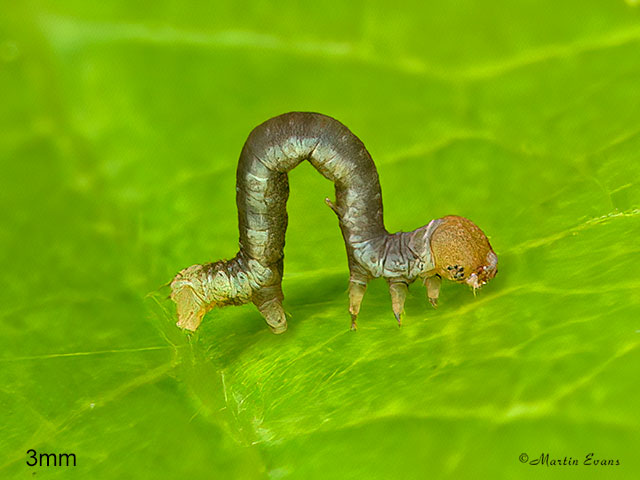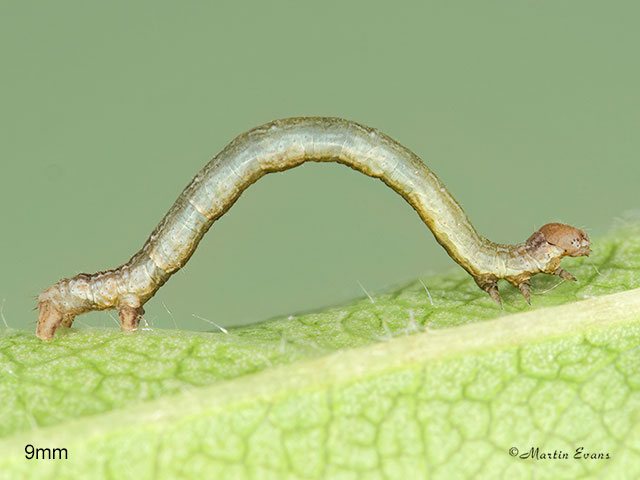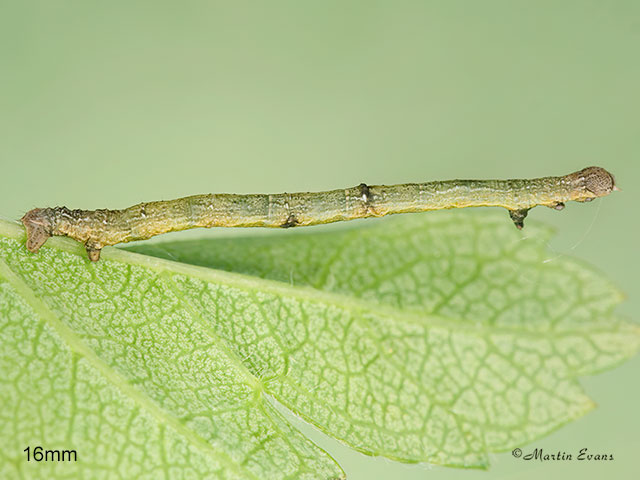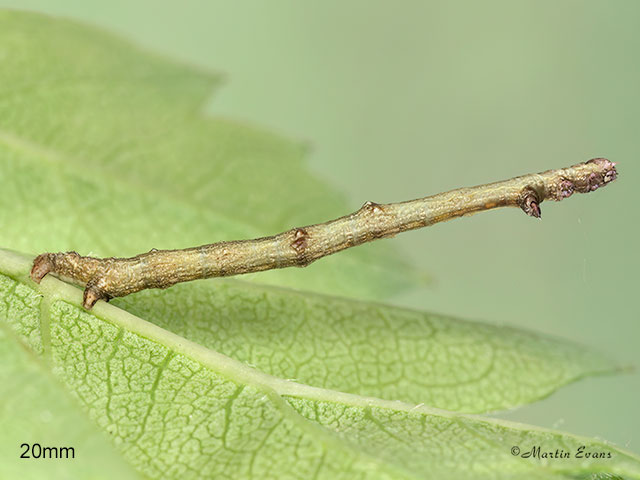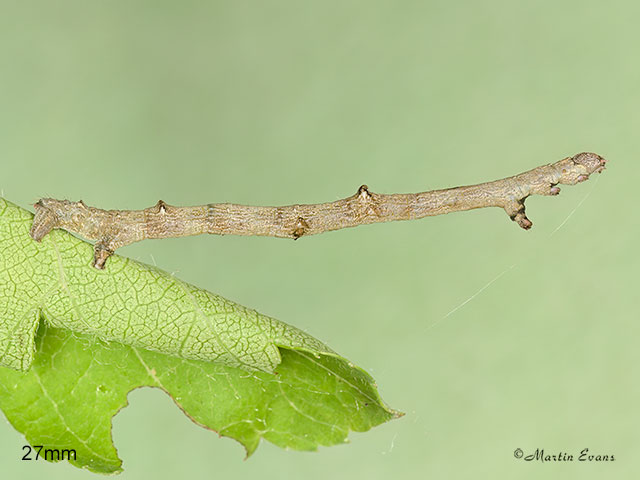Geometridae
70.232 Large Thorn Ennomos autumnaria (Werneburg, 1859)
Notable B
Similar species: Although the females can be large, some smaller specimens of Large Thorn are of a similar size to the other thorns. Some moths have two obvious central bands across the forewing, but the size and pattern of large speckles should be enough to distinguish this moth from other British or Irish species.
Forewing: 21 to 28mm
Habitats: Deciduous woodland, scrub and occasionally gardens.
Habits: The moth comes to light.
Foodplant: The larva feeds on Pedunculate Oak, other oaks, elms, birches, sallows, poplars, Alder, Sycamore, Small-leaved Lime, Hawthorn, Blackthorn, plums, cherries, apples and many other deciduous trees and shrubs. It pupates in a cocoon spun under a leaf or in the leaf litter.
